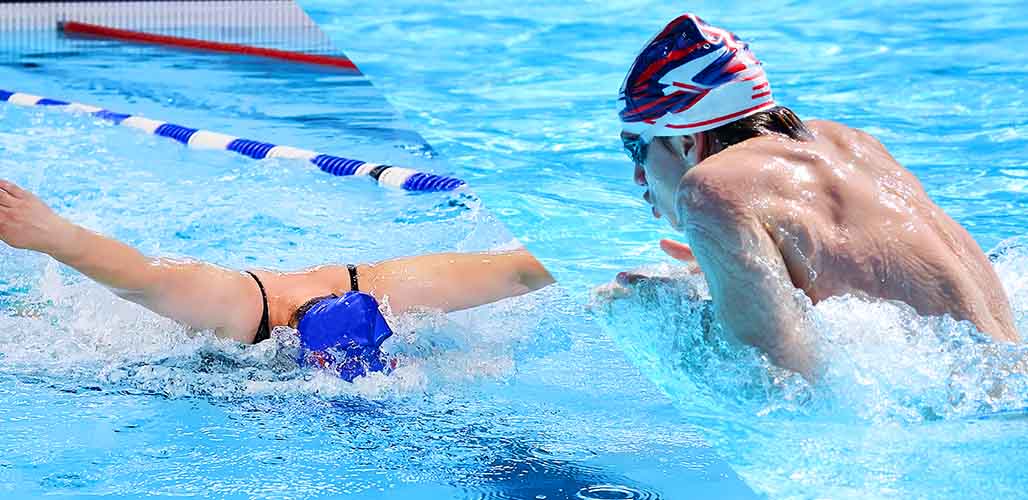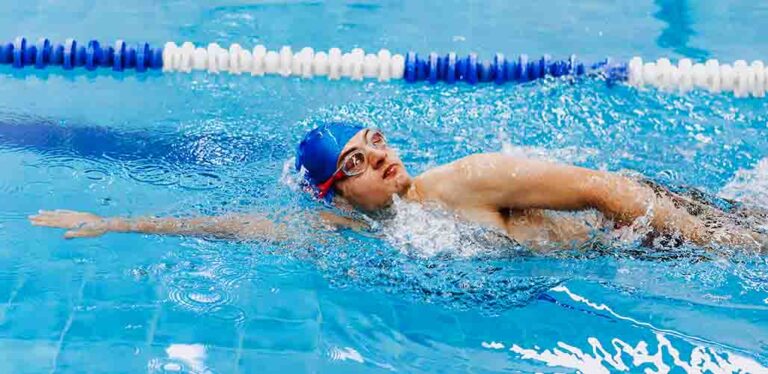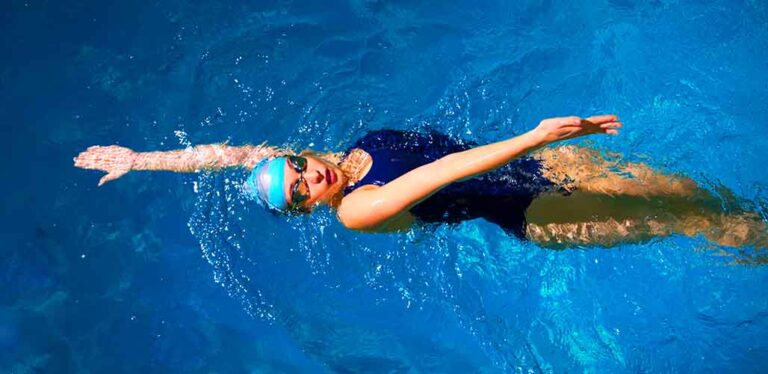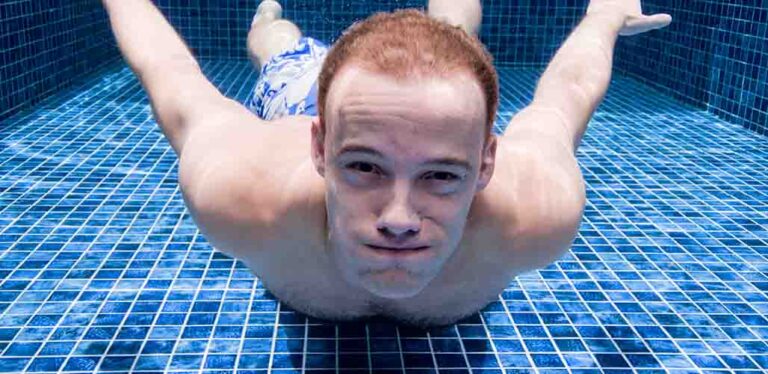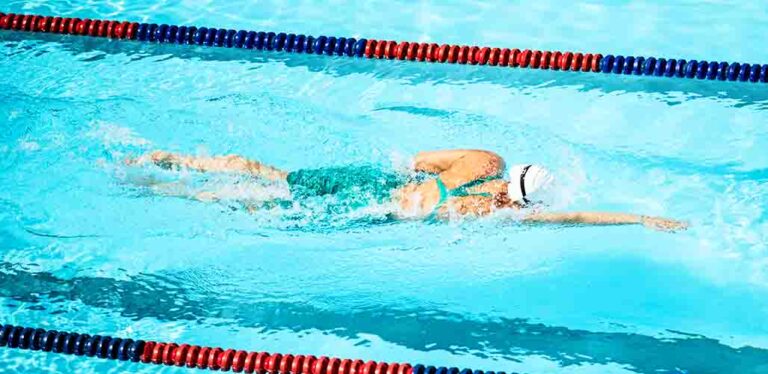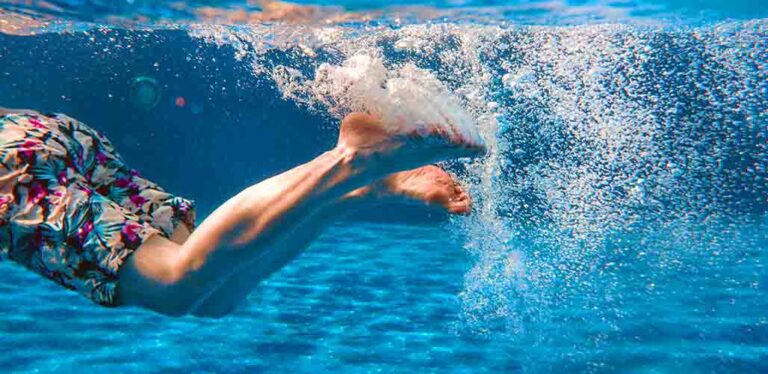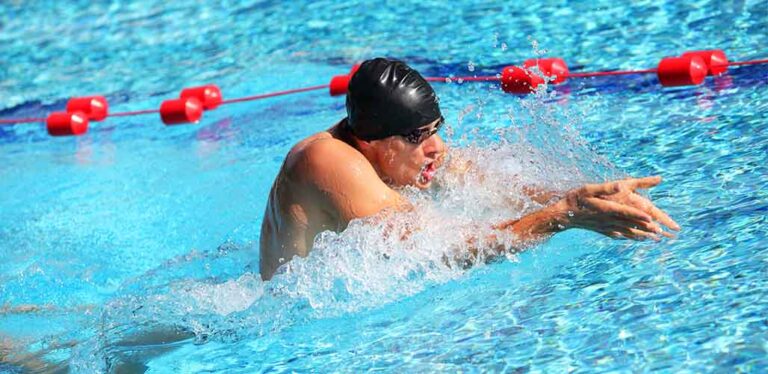Breaststroke Vs Butterfly
Which is the better way to swim: breaststroke vs butterfly? I’ll admit, at first these two strokes seem so different from one another in terms of technique, energy and speed that it hardly seems worth comparing them at all. Surely everyone is going to know which one they prefer without much difficulty? Butterfly is all about using your arms and torso to produce explosive speed in swimming sprints. Whilst breaststroke is achieved primarily in the legs, and is much easier to maintain at a moderate pace over longer workouts. But these aren’t the only things to consider – and there are some good reasons why you should challenge yourself to learn both, too!
Contents
- Breaststroke vs butterfly: which is easier to learn?
- Which is faster?
- Which will make you stronger?
- Is one a better workout than the other?
Breaststroke vs Butterfly
At my local pool, it’s pretty unusual to see anyone swimming butterfly stroke unless they’re training with the local swim club. This stroke is big, dramatic and impressive, and I think it’s safe to say that most amateur swimmers are a bit intimidated by it. On the other hand, breaststroke is the go-to stroke for lots of swimmers, of all ages, fitness levels and swimming ability. It is fluid, graceful, and barely leaves a ripple in the water behind you.
So superficially, it seems like they could hardly be more different, right? But does that mean you should stick to just one of them? Of course not! The best way to maximize the benefits of swimming is to learn as many of the main four strokes as possible, and use them all four in your workout. And what’s more, breaststroke and butterfly naturally complement one another in some satisfying ways. Just take a look!
Breaststroke vs Butterfly: Which is easier to learn?
Let’s start at the beginning, which stroke is easier to master? Well, it’s a hands down win for breaststroke on this front. Breaststroke is popular with learners in the pool because you maintain good visibility around you, and there’s even the option of keeping your face out of the water entirely at first. It takes a little practice to master the arm and leg positioning at each point in the stroke, and synchronize them together correctly, but for lots of us, this is one of the first strokes we ever learn.
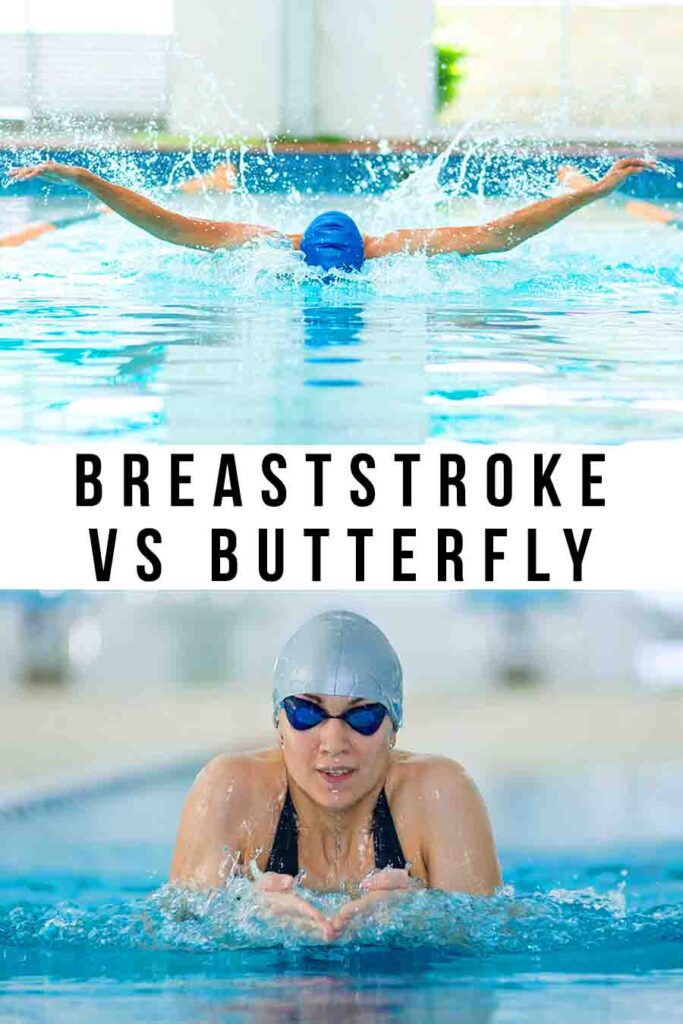
Butterfly, on the other hand, is the last stroke most swimmers learn. The long, undulating movement through the body, and the corresponding ‘catch’ with the arms is technically harder than any of the other strokes to master. That said, there’s no reason why anyone can’t learn it, and practicing it brings advantages which are definitely worth the investment!
Which is faster?
Let’s look at speed next. The headline here is straightforward: butterfly stroke is faster than breaststroke. In fact, butterfly is second only the freestyle (usually front crawl) in terms of speed, and breaststroke is the slowest of the four main techniques.
Here’s a specific example of how that looks. Over a long course competition (two lengths of an Olympic-sized swimming pool, or 100m):
- The male world record time for breaststroke is 55.28 seconds, and the female record is 62.36 seconds.
- The male world record time for butterfly stroke is 47.78 seconds, and the female world record is 54.05 seconds.
In other words, elite athletes cover 100 meters 13% faster when they swim butterfly stroke, relative to breaststroke.
Which will make you stronger?
If butterfly is faster, does it follow that you’re working harder and getting stronger than if you swim breaststroke?
Swimming butterfly correctly primarily engages the abdominal muscles and hips to achieve that extremely dynamic undulation in the water, linked to an arm snatch which uses the shoulders and upper arm muscles. The main muscle groups called to action are the:
- Chest (pectorals)
- Back (specifically the trapezius and erector spinae)
- Shoulder (deltoids)
- Abdominals
- Thighs (quads)
- Butt (glutes)
- Calves
Meanwhile, the breaststroke is characterized by a powerful frog kick, followed up with a powerful chest press action with the arms. The main muscles used are the:
- Chest (pectorals)
- Back (specifically the latissimus dorsi)
- Shoulder (deltoids)
- Thighs (quads)
- Calves
To put it another way, butterfly and breaststroke are all about opposite ends of the body. Butterfly is driven by strong movements from the torso and arms, whilst most of the propulsion in breaststroke comes from the kick. And to illustrate that yet another way:
- Butterfly using only the legs is slower than butterfly using only the arms
- And breaststroke using only the arms is slower than butterfly using only the legs.
It’s in this sense that these two strokes actually complement each other really well, in order to achieve a truly all-over strengthening workout.
Which is a better workout?
Besides strengthening, how do these strokes compare? For lots of us, swimming is a welcome form of low-impact aerobic workout, or ‘cardio’ exercise. Aerobic workouts are good for our cardiovascular health – that is, they keep our heart and lungs working effectively, and maintain their ability to take in oxygen and deliver it to our muscles and organs.
Butterfly and breaststroke both have the potential to be a great cardio workout. Part of the reason for this is because they are both simultaneous strokes. That is, the arm and leg on each side of the body moves at the same time as its counterpart on the other side. This sets them apart from freestyle and backstroke, which are alternating strokes. Simultaneous strokes are less energetically efficient. That is, they use up more energy than alternating strokes to cover the same amount of distance. So 20 lengths of butterfly or breaststroke will tire you out more and burn more calories than 20 lengths of front or back crawl. Of the two, breaststroke is slightly more work than butterfly – because you perform more of the stroke under water, and therefore against the water’s resistance. So over distance, breaststroke will make you work hardest.
Over time however, butterfly stroke will burn more calories, because it is faster and more powerful. Butterfly swimming burns approximately 800 calories an hour, whilst breaststroke burns more like 360. However, swimming breaststroke for an hour is much more realistic for most people than swimming a full hour of butterfly!
Breaststroke vs Butterfly: Summary
Breaststroke and butterfly are the two simultaneous swimming techniques. But whilst butterfly is highly technical, explosive and fast, breaststroke is easier to learn, and suited to swimmers of all fitness levels and abilities. Since butterfly relies heavily on muscles in the top half of the body, whereas breaststroke is powered mainly by the legs, they make a perfect pair in the same workout to strengthen both ends of your body!
Which do you prefer out of breaststroke vs butterfly? Let us know in the comments box down below!

